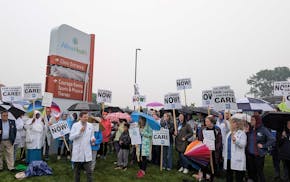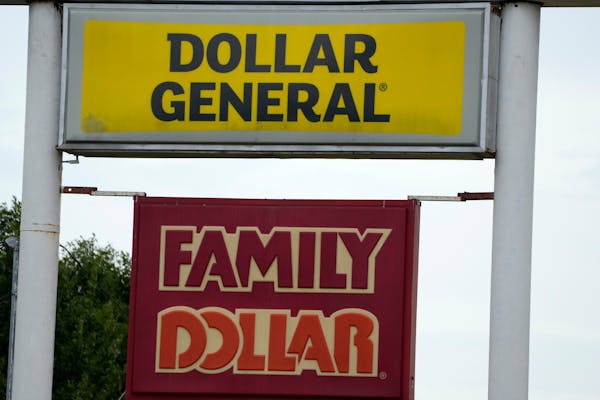Grocery prices in the Twin Cities may have hit a tipping point and are now slightly lower than they were a year ago.
That's good news for consumers' pocketbooks as residents in the Minneapolis-St. Paul region continue to experience lower inflation than the nation as a whole, even if the rate has bumped up a bit in recent months.
Grocery prices in the region fell 0.8% last month compared with a year ago, according to data released Tuesday by the Bureau of Labor Statistics.
"I think that has been a selling point for people feeling inflation slowing," said Tyler Schipper, an associate professor of economics at the University of St. Thomas. "It's getting back to a point where people don't notice prices going up every single time they go to the grocery store. And I think that's a really important metric for normalcy."
In the metro area, prices for fruits and vegetables declined by 7.2%, and dairy and related products decreased by 5.4%. Prices for cereals and baking products dropped 2.7% and for meats, poultry, fish and eggs by 2.3%. Meanwhile, restaurant prices rose 4.6%.
Twin Cities' grocery prices, compared to a year ago, fell for the first time in several years in December and January. They had risen as much as 16%, and were generally hitting double-digit increases in some months of 2022 when regional inflation hit a recent peak of more than 8%.
In the nation as a whole, grocery price increases have also been moderating in recent months, rising 1.2% in January year over year, while restaurant prices jumped 5.1%.
But it wasn't all good news for grocery prices in the latest inflation report. While they improved year over year, grocery prices in the Twin Cities rose a bit faster — 0.6% — over the previous two months.
"That was kind of disappointing," Schipper said.
Economists don't expect grocery prices — or prices for most items — to return to 2020 levels. While some items may see some deflation, they mostly expect prices to stop rising as fast as inflation cools off.
The overall consumer price index for the Twin Cities region, a closely watched measure of inflation, was 2.6% in January on a year-over-year basis. That is lower than the 2.8% annual rate recorded in November, but higher than the 1.8% logged in May and 1% in July.
Still, inflation in the Twin Cities remains below the overall U.S. rate, which came in higher than expected at 3.1% last month. While the U.S. rate ticked down from 3.4% in December, so-called core prices, which strip out volatile food and gas prices, increased at 3.9% on an annual rate and also rose on a monthly basis.
"Things still look better in Minneapolis than the rest of the country in terms of inflation," Schipper said. "But we saw some of the same disappointments at our local level as you saw in the national report."
In particular, he noted that prices for shelter and services ticked up and continue to be drivers of inflation.
Together, the local and national data for January illustrate that the effort to bring inflation down is not complete and the road to bringing it down to the Federal Reserve's target of 2% may still take some time.
"Combined with the strong January jobs report, the inflation data show an economy that isn't slowing as rapidly as many had predicted or feared," David Royal, chief financial and investment officer at Minneapolis-based Thrivent Financial, said in a statement.
While the Federal Reserve had already signaled it was not likely to cut rates in March, Royal added that it's now difficult to see policymakers cutting in May after this inflation report.
"Summer cuts likely remain a possibility," he said.
In the Twin Cities, consumers have also been seeing some relief at the pump. Energy prices in the region fell 7.3% in January from a year ago, mostly due to lower gasoline prices. However, gas prices have since started ticking back up.
In the past year, the Minneapolis-St. Paul region sometimes had the lowest inflation rate among the dozen other U.S. metro areas for which the Bureau of Labor Statistics releases inflation data every other month.
But in January, two other regions showed a slower inflation rate: Boston with 2%, followed by Los Angeles with 2.5%.
The Dallas-Ft. Worth region had the highest annual rate among the dozen at 5.3%.

Bushel Boy, Minnesota's local tomato grower, sold
After 60 years, federal cuts shutting down Job Corps center in St. Paul

In a first, Minnesota doctors walk their own picket line, then hustle to see patients
It's harder to find a job this year, especially a corporate position

